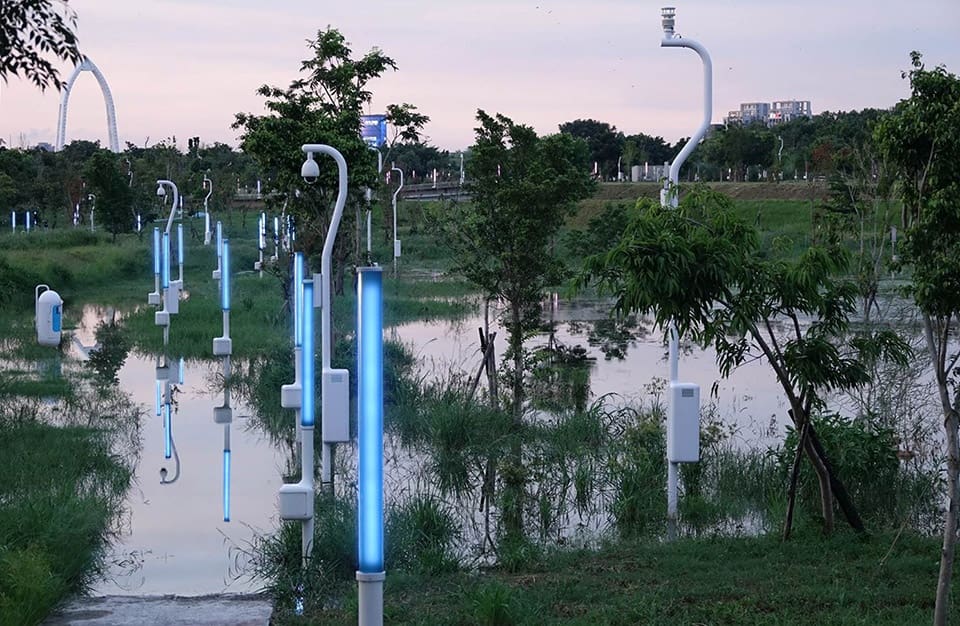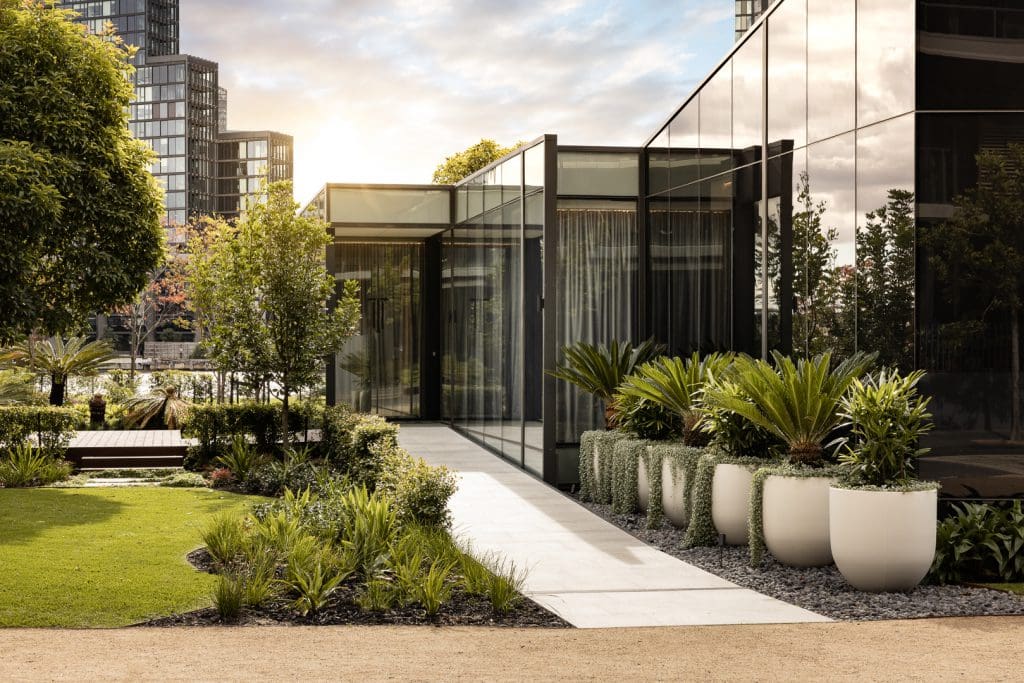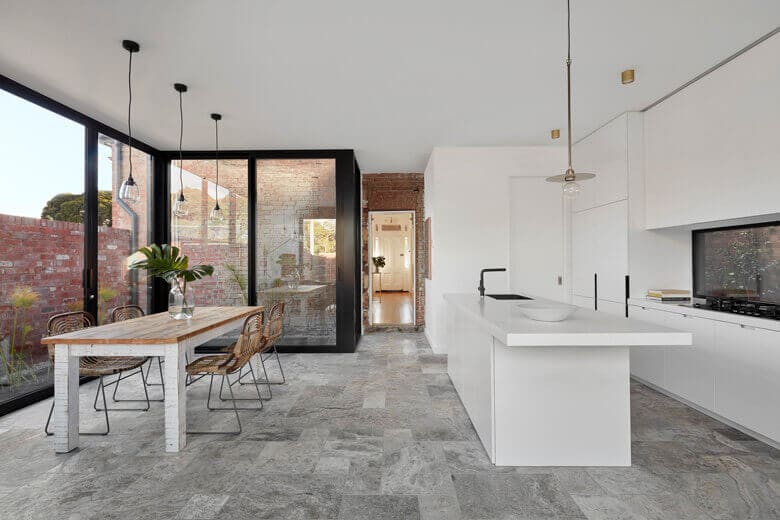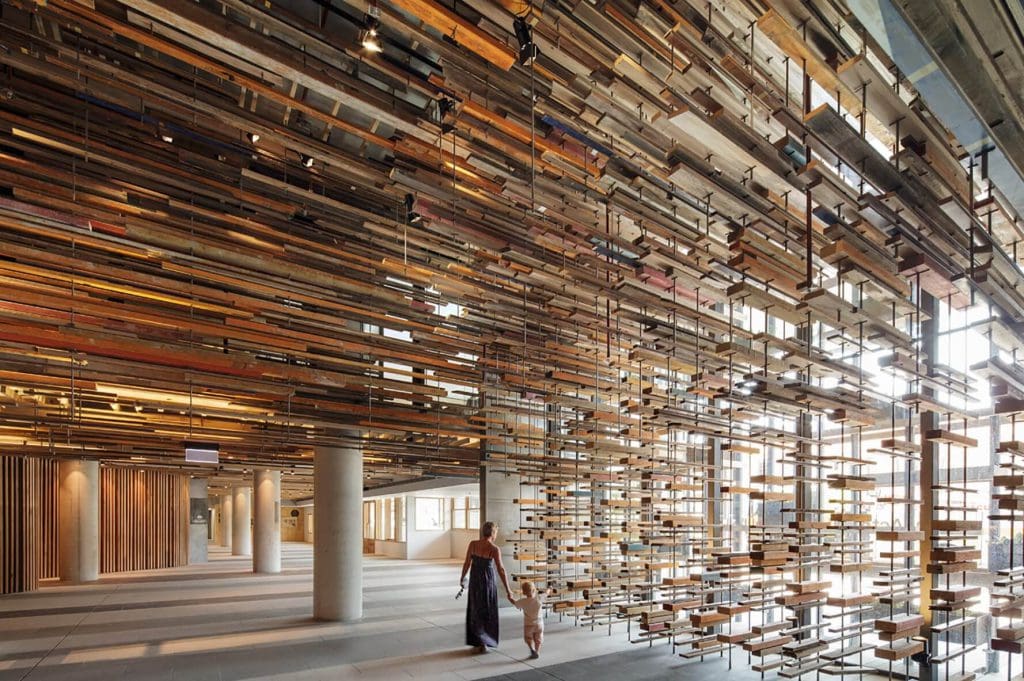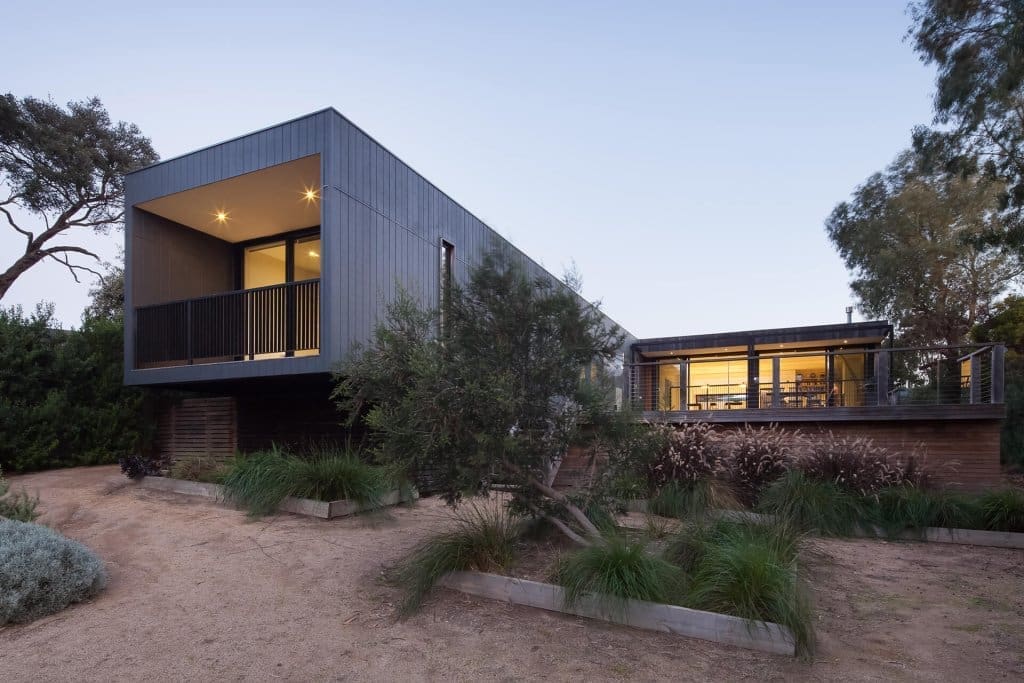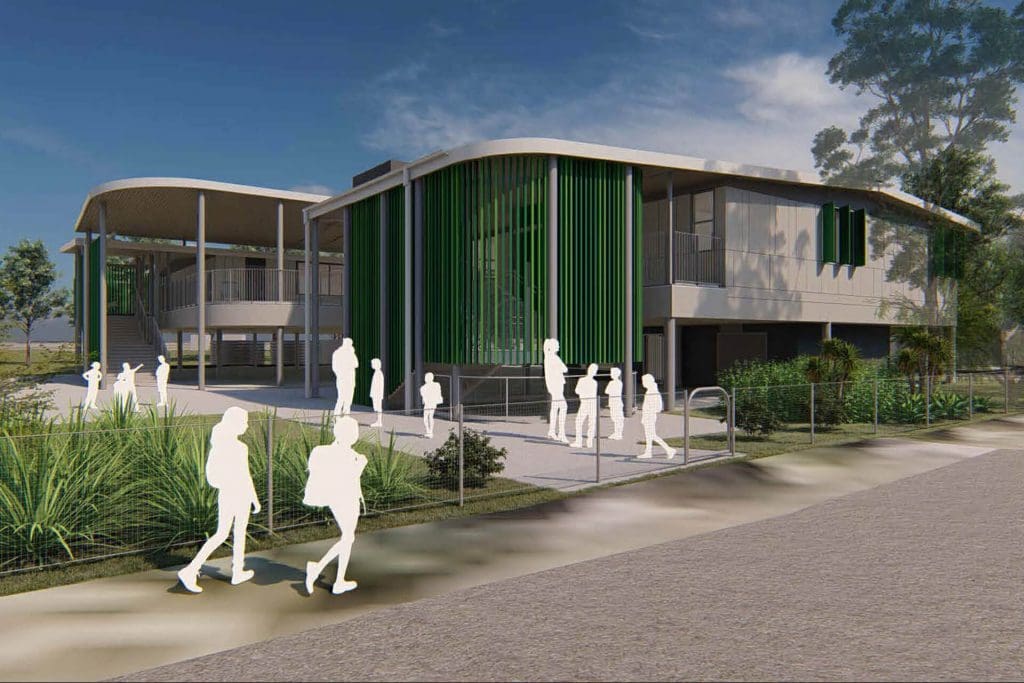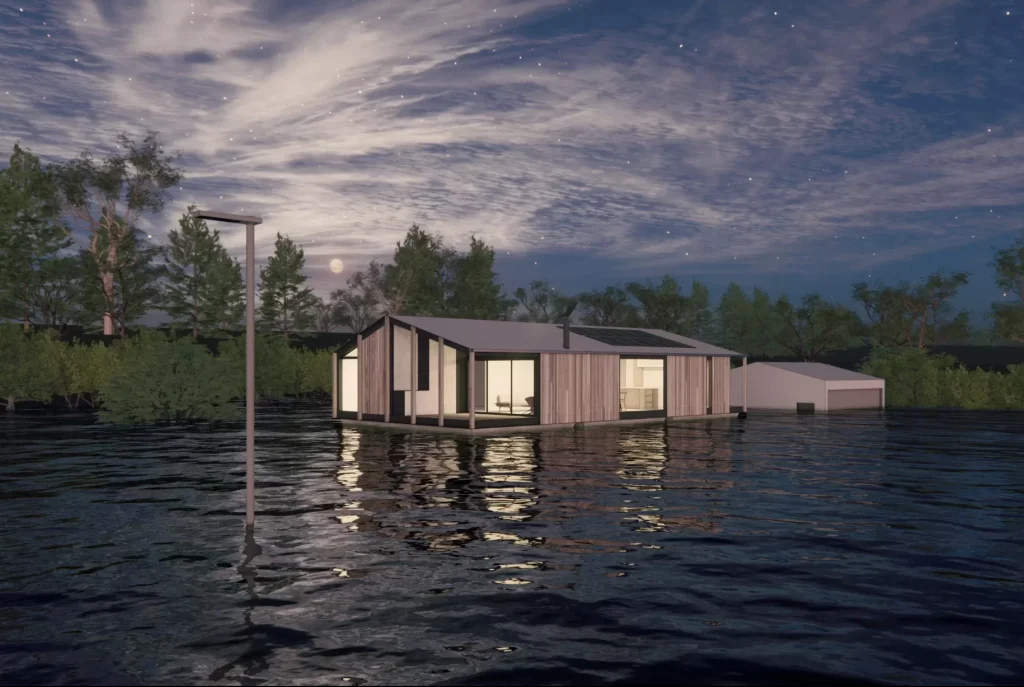Things We Love: An Inner-City Park That Combats Climate Change
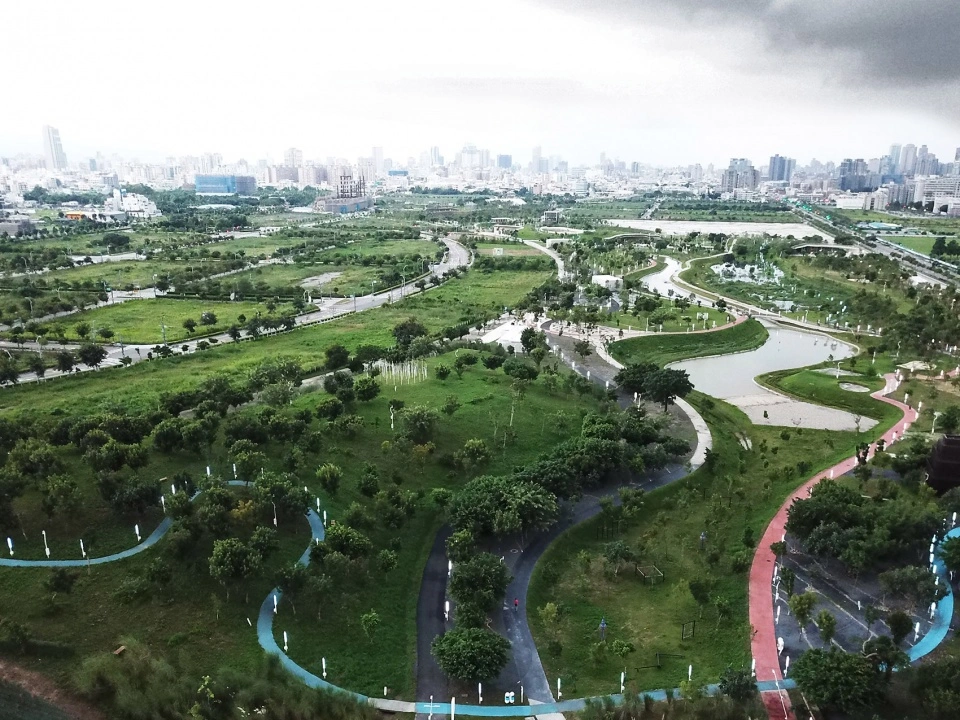
Phase Shifts Park in Taichung, Taiwan was designed by French landscape architects, Mosbach Paysagistes, with two key objectives in mind – creating a unique human experience and exploring the atmosphere to embrace the varying climatic conditions within.
Mapping the atmospheric space, the aim is not to modulate conditions, for instance, making the hotter areas cooler. Instead, the scheme maintains and even extends the graduation of conditions, increasing qualities where areas are naturally cooler, less polluted and less humid, using the polarity of the conditions to distinguish them.
These distinctive climatic conditions offer the rational for siting major programs and activities. Sport, for example, is sited within areas of low pollution and humidity, water games placed in high humidity areas and indoor programs. The careful study and understanding of the land the architects undertook is evident in the use of sprawling trees that reduce humidity and provide shade to areas of leisure. Channels woven into the landscape protect passers-by from urban traffic while ensuring the continuity of ecological migration corridors, running 4km south to north, of animal, plant and human populations.
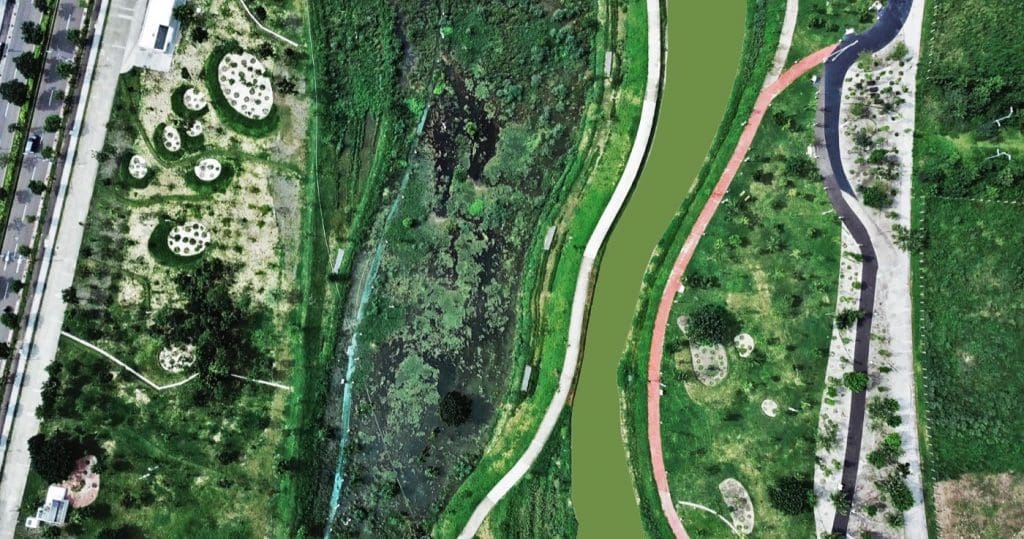
The park offers a variety of places to explore, based on the principle of senses of Rudolf Steiner, with twelve Fields, each designed to a sense – Speech, Taste, Hearing, Equilibrium, Thinking, Vision, Movement, Ego, Touch, Warmth and Smell – such as a garden full of pungent flowers, or a lake area designed with echoing qualities.
As high density living becomes essential in urban areas, so is the need for public spaces where inhabitants can relax and enjoy time away from the built-up landscape. Careful urban planning can ensure better designs to preserve greenery, migration corridors and offer a refuge and connection back to nature.
